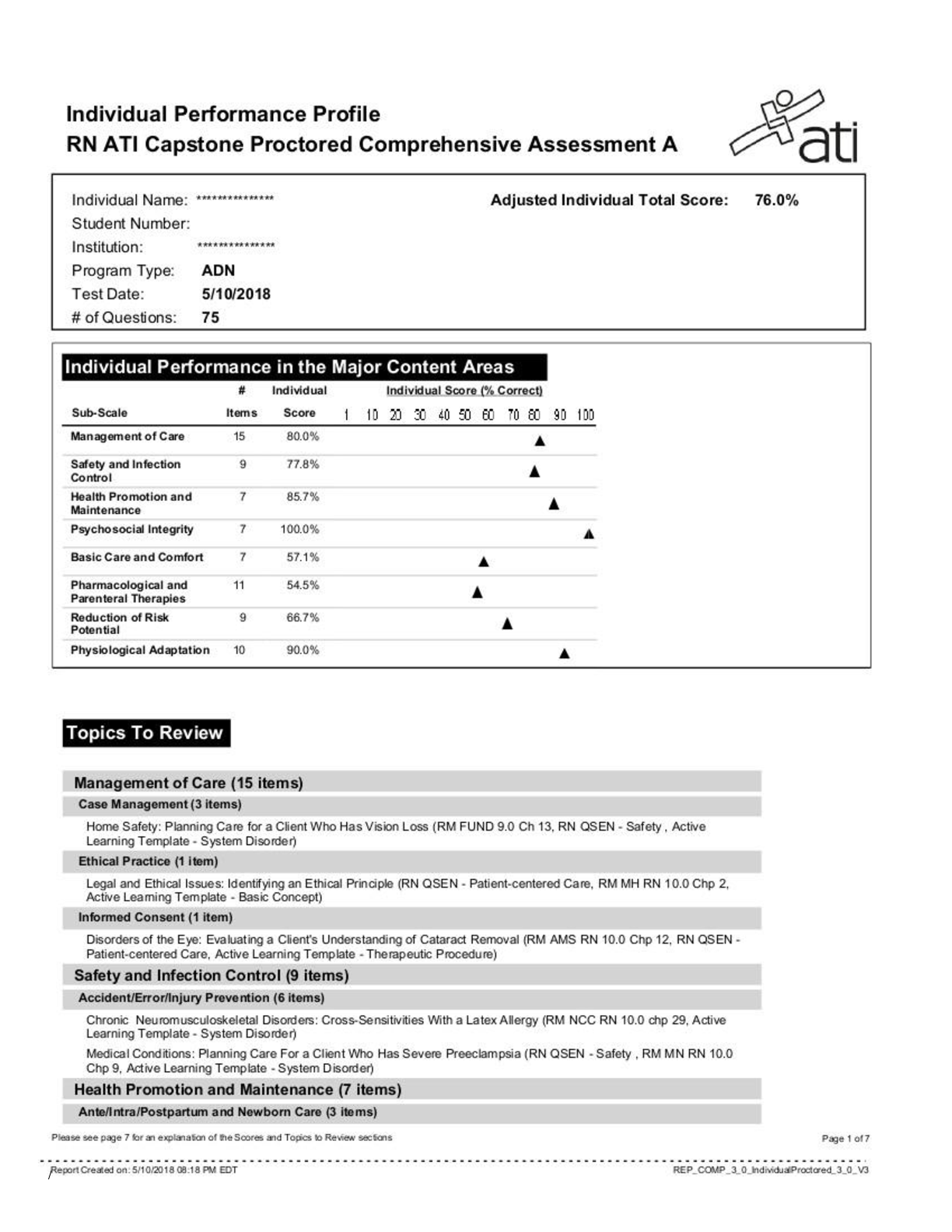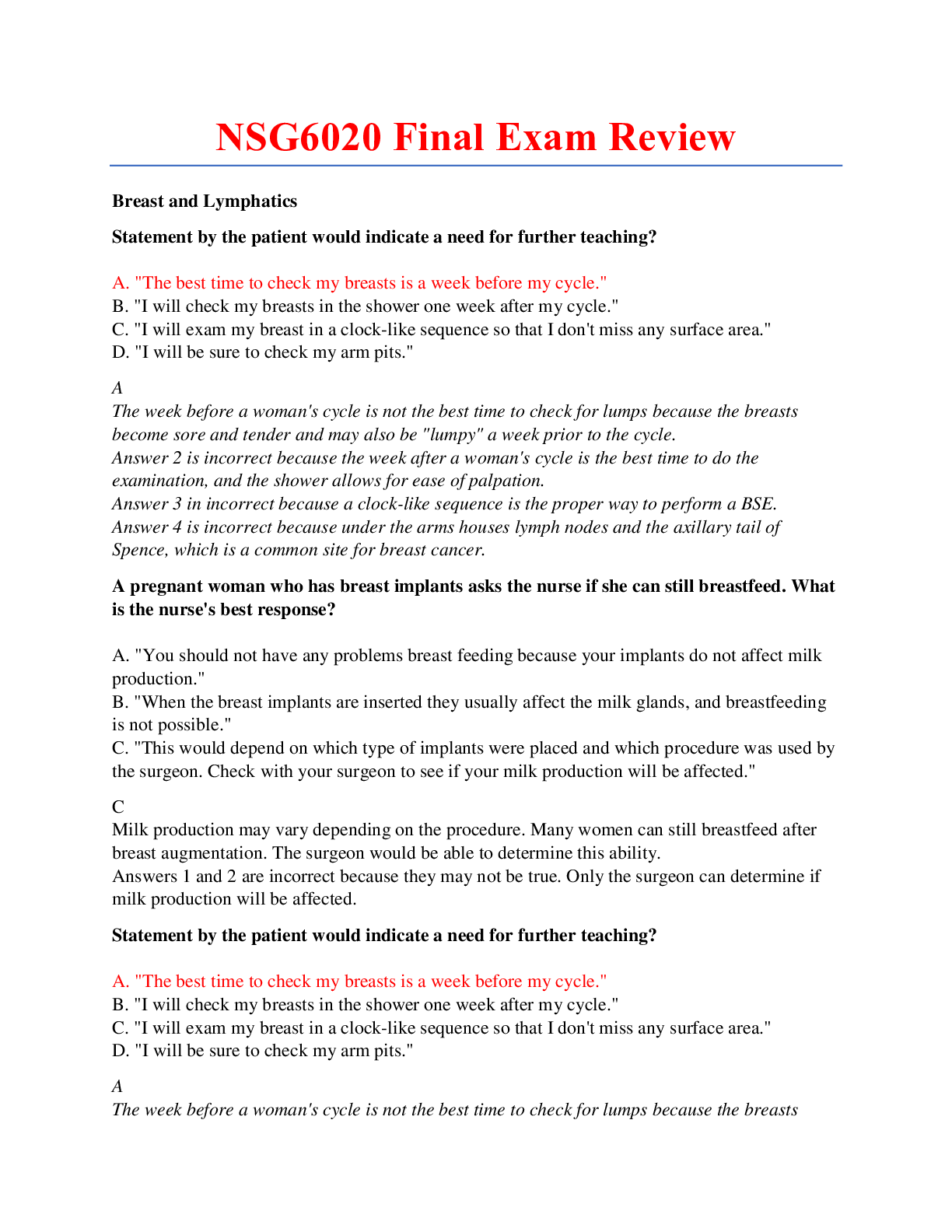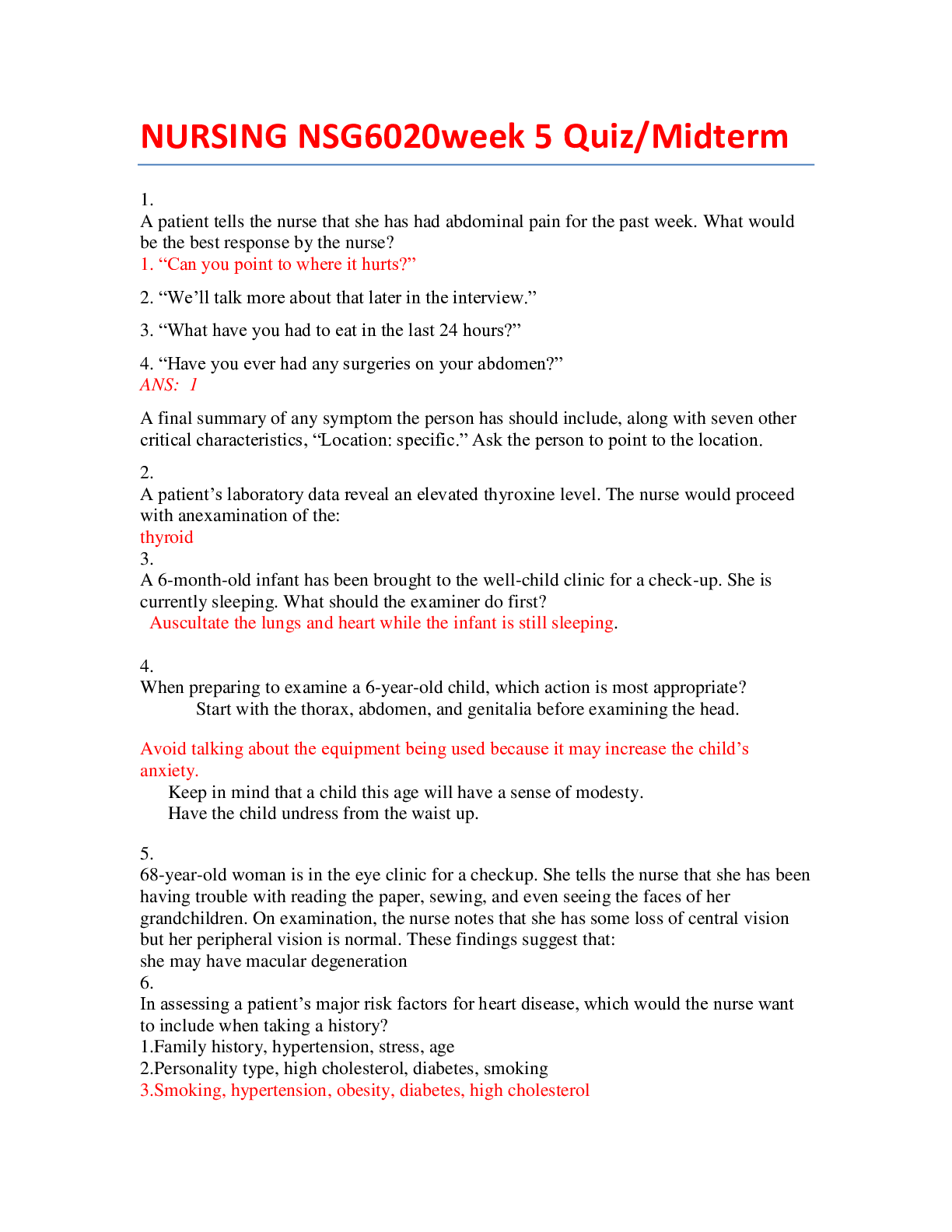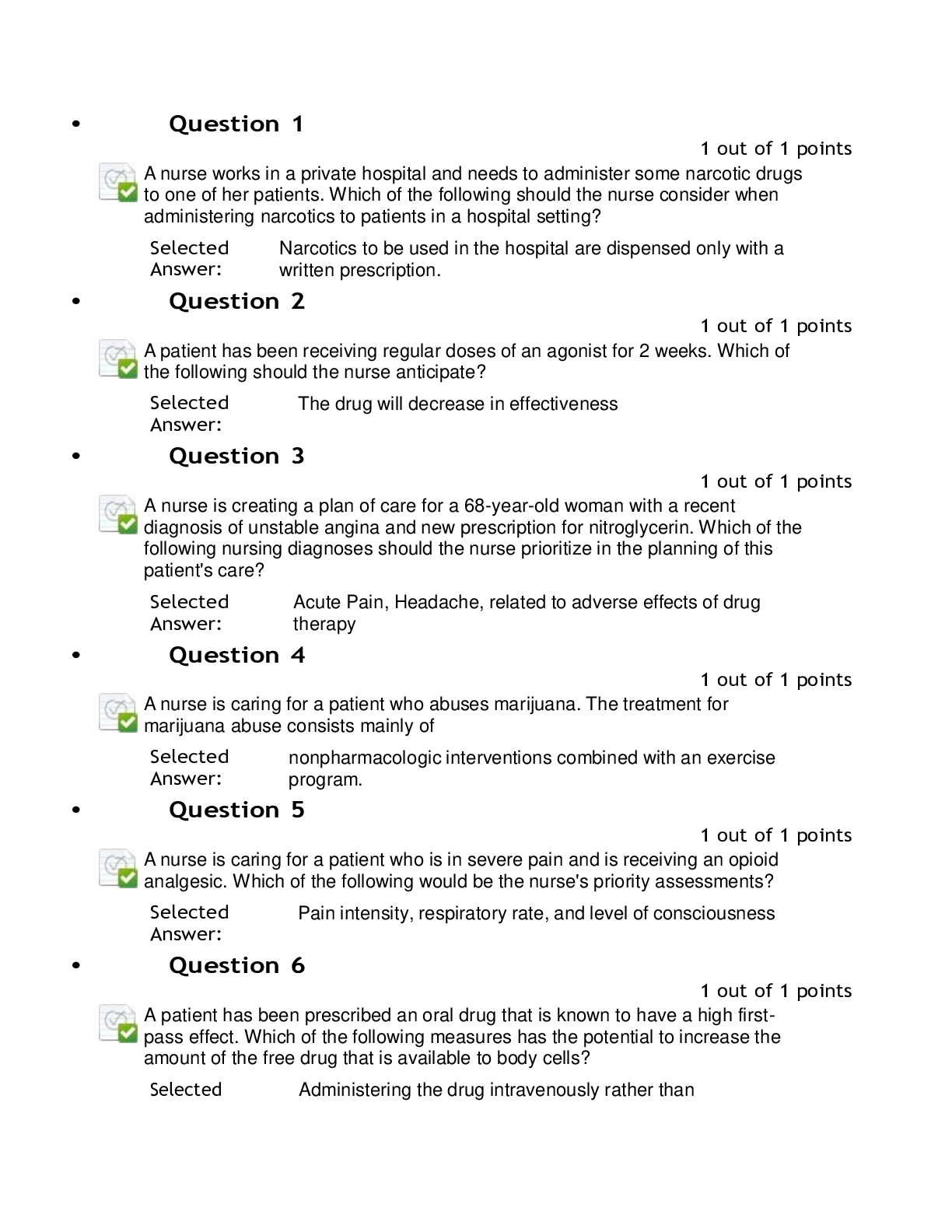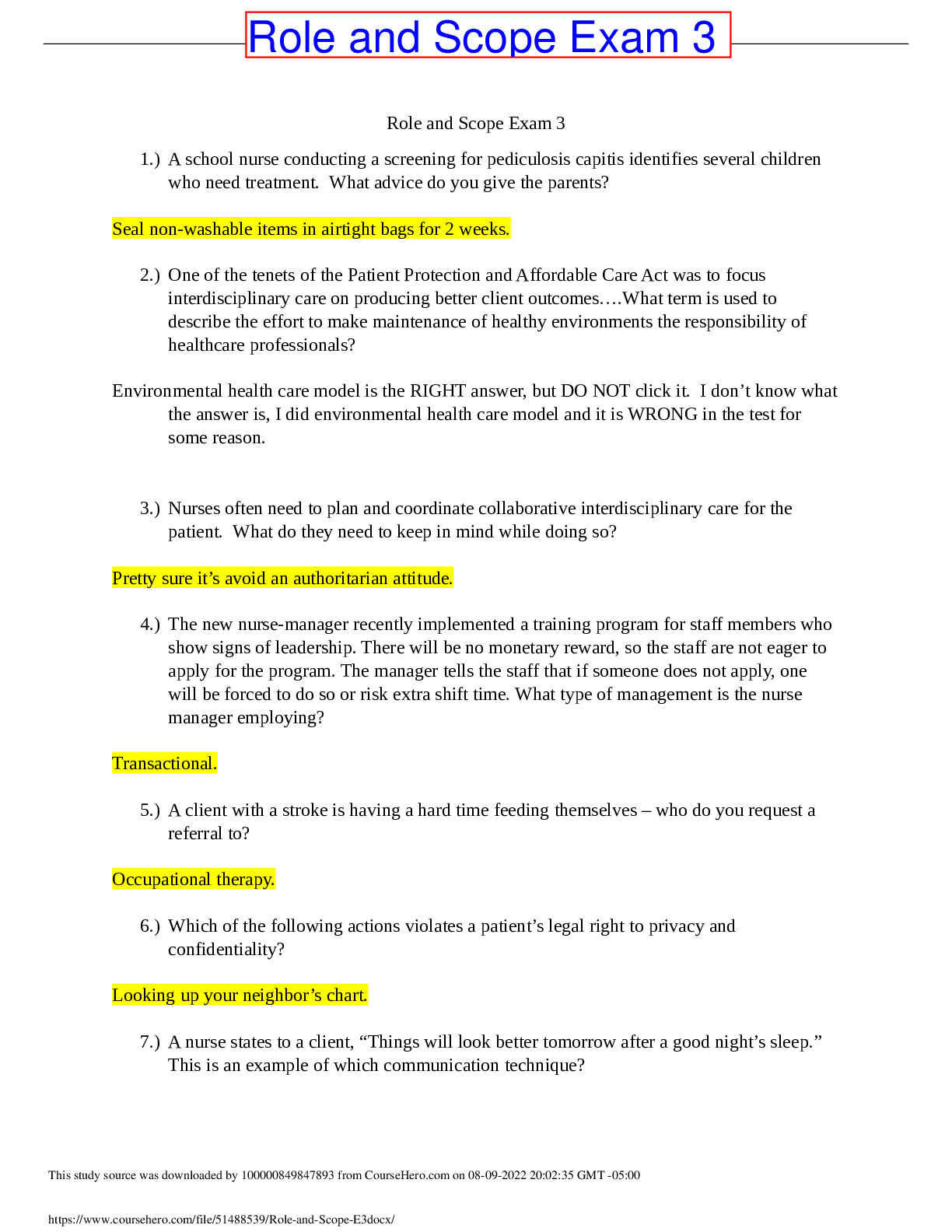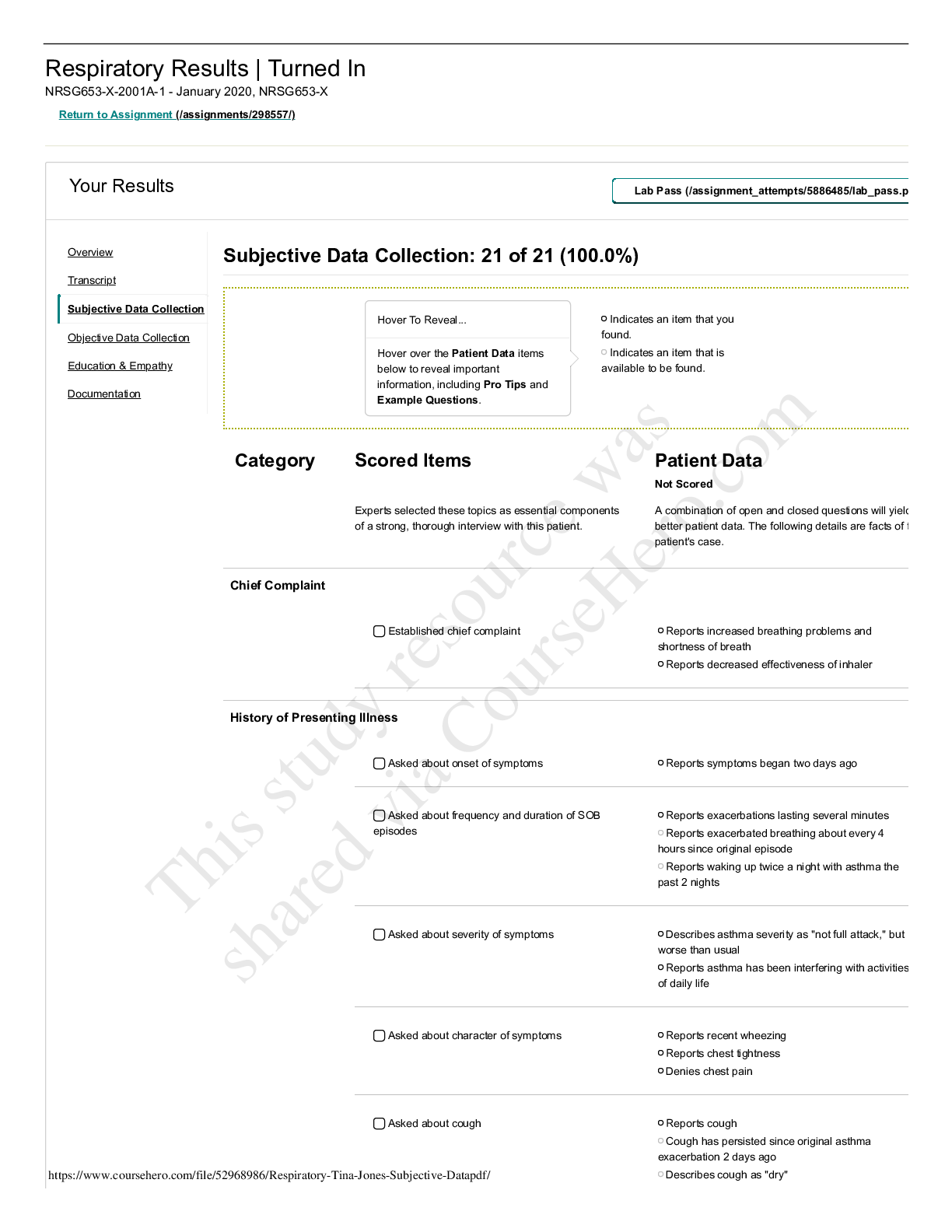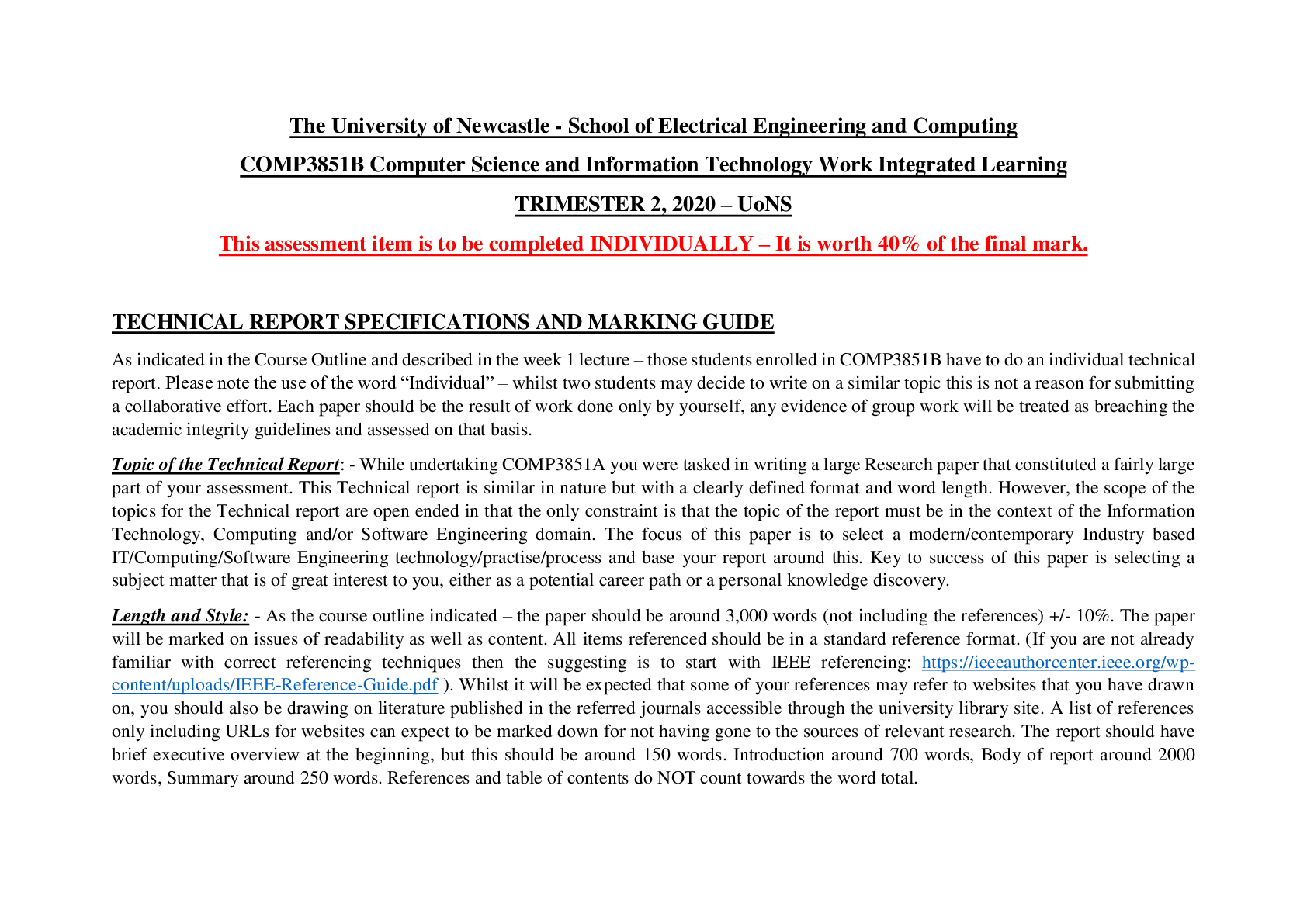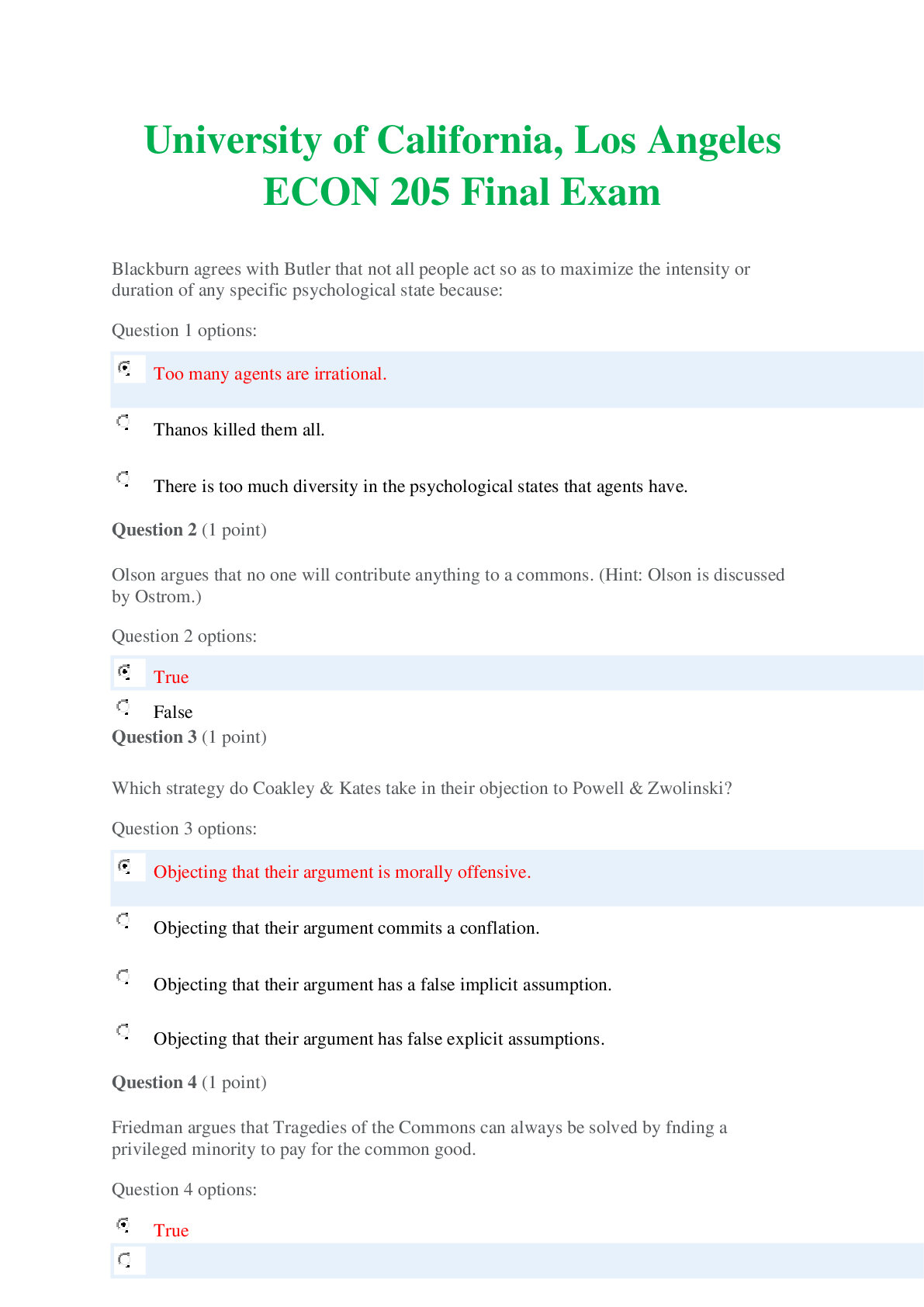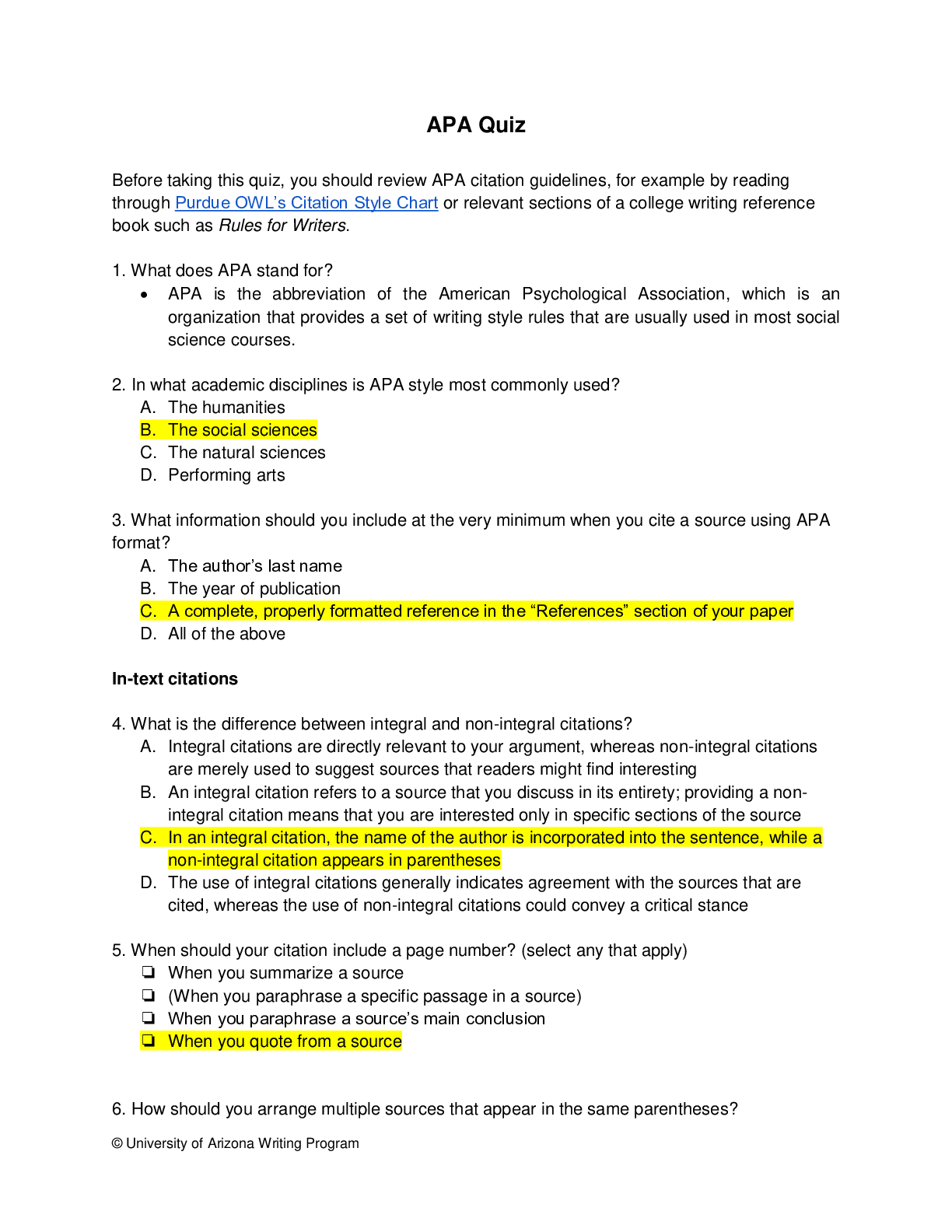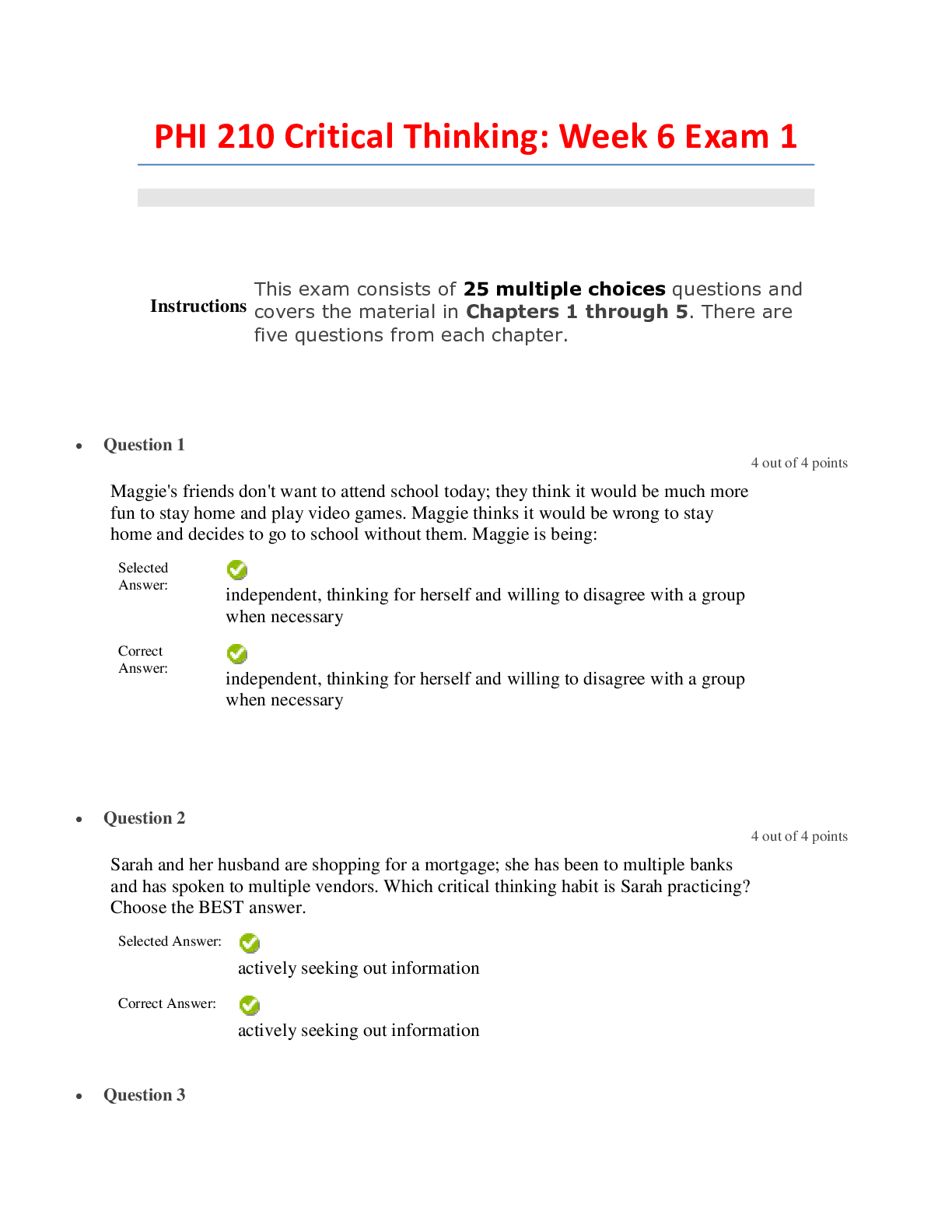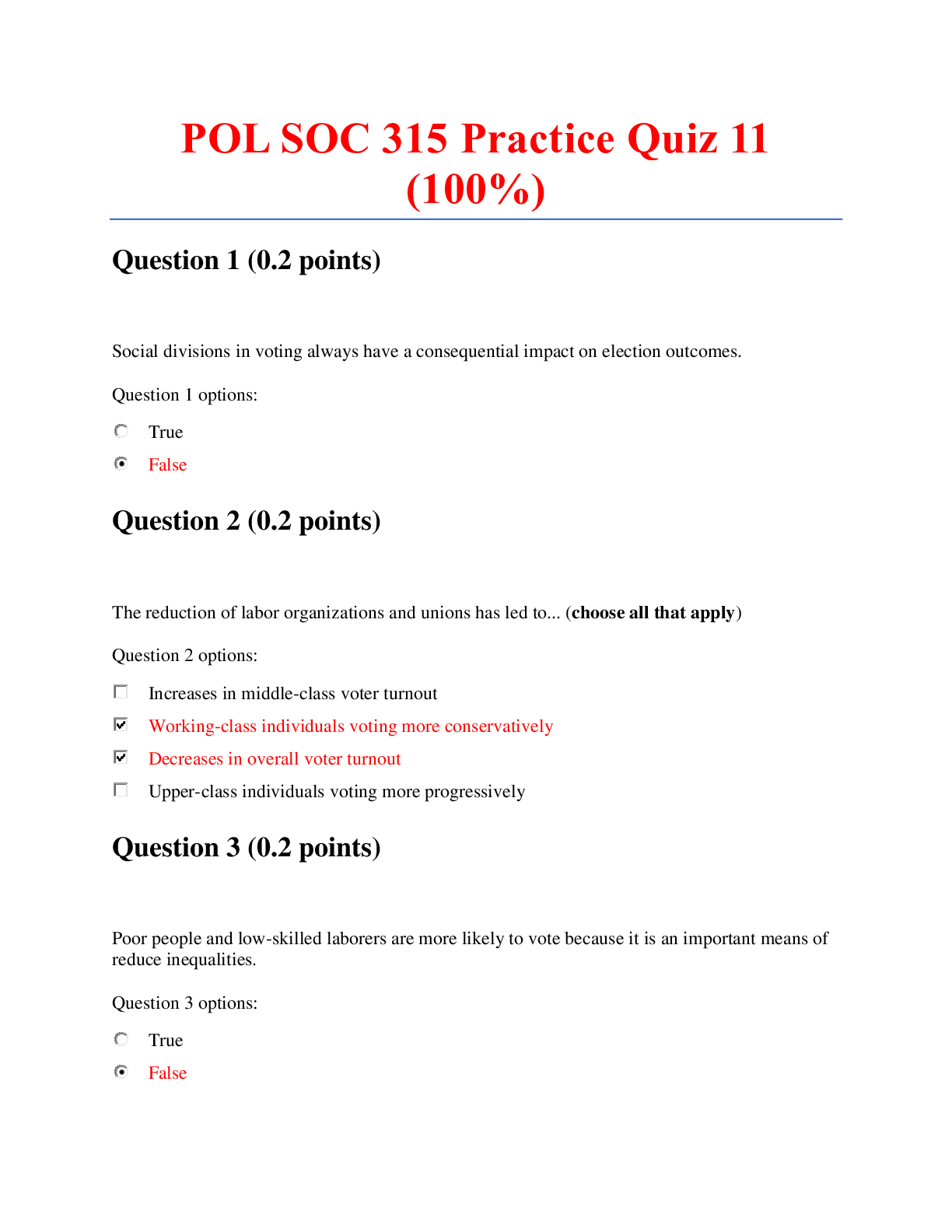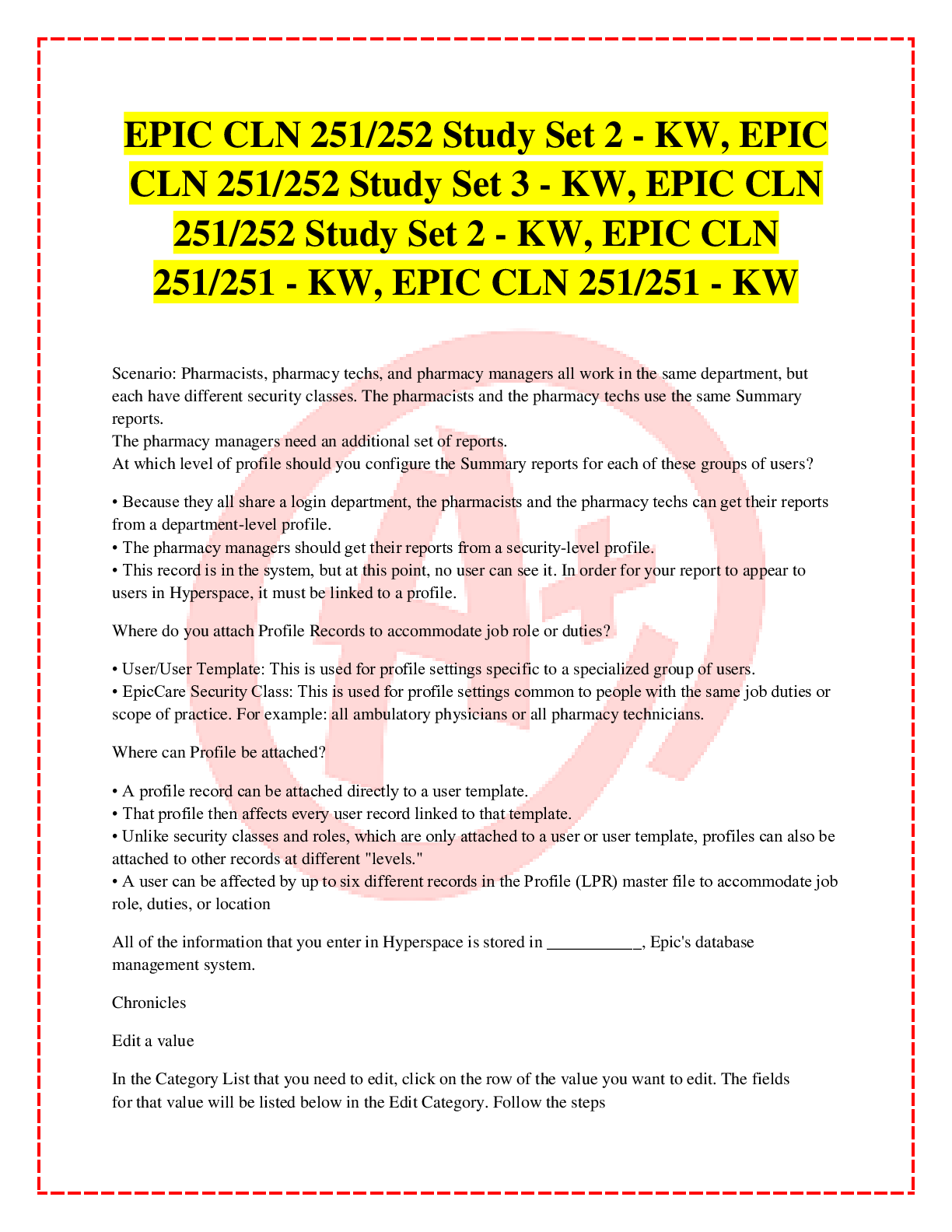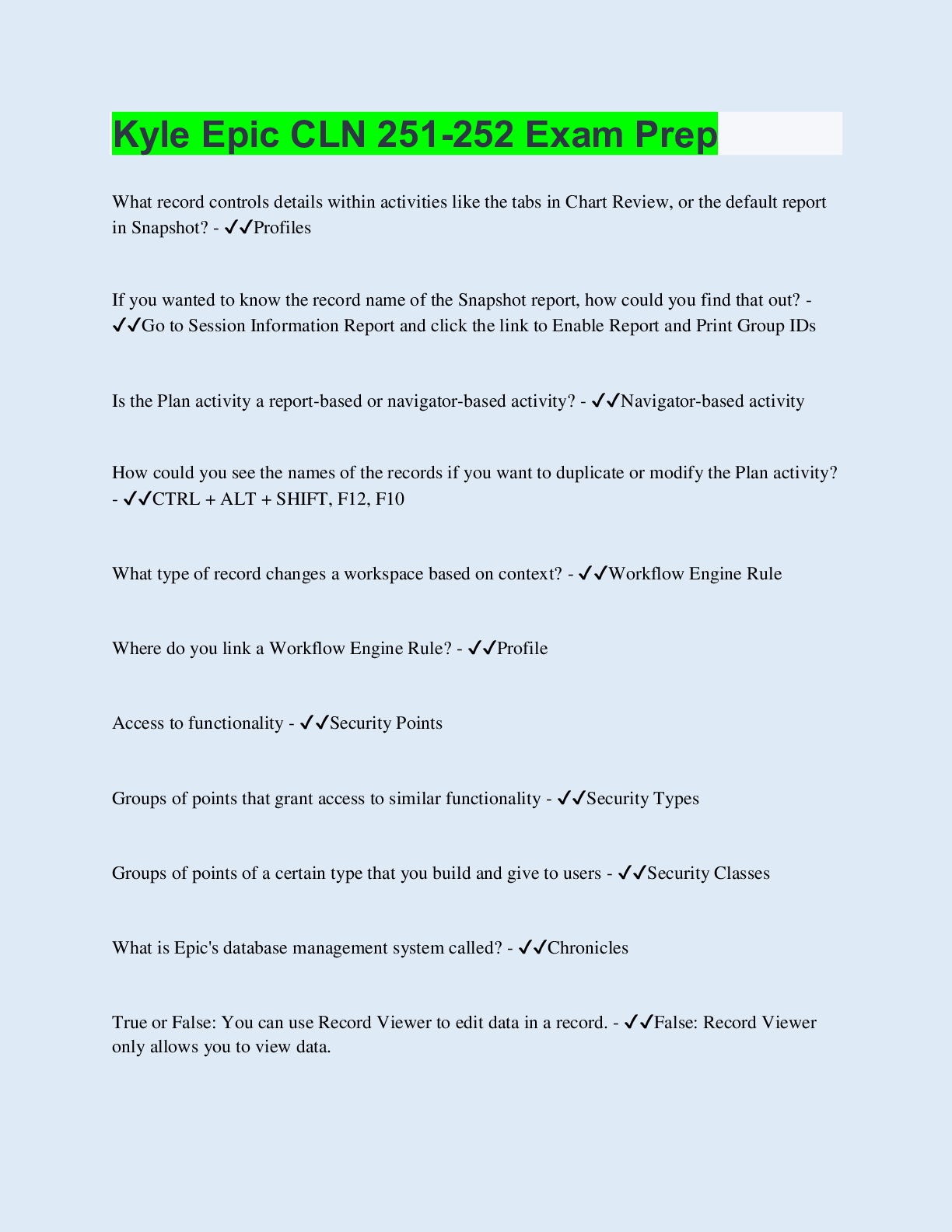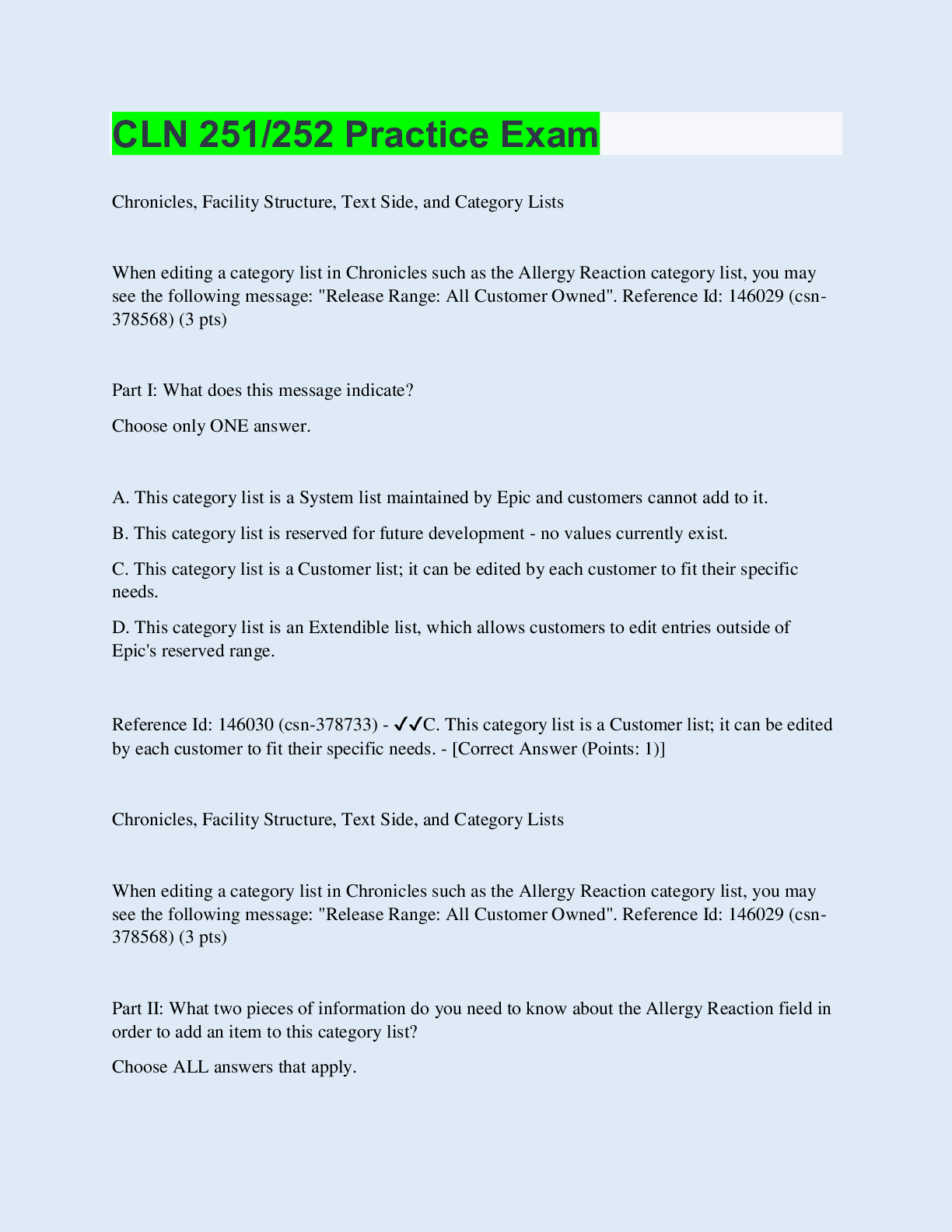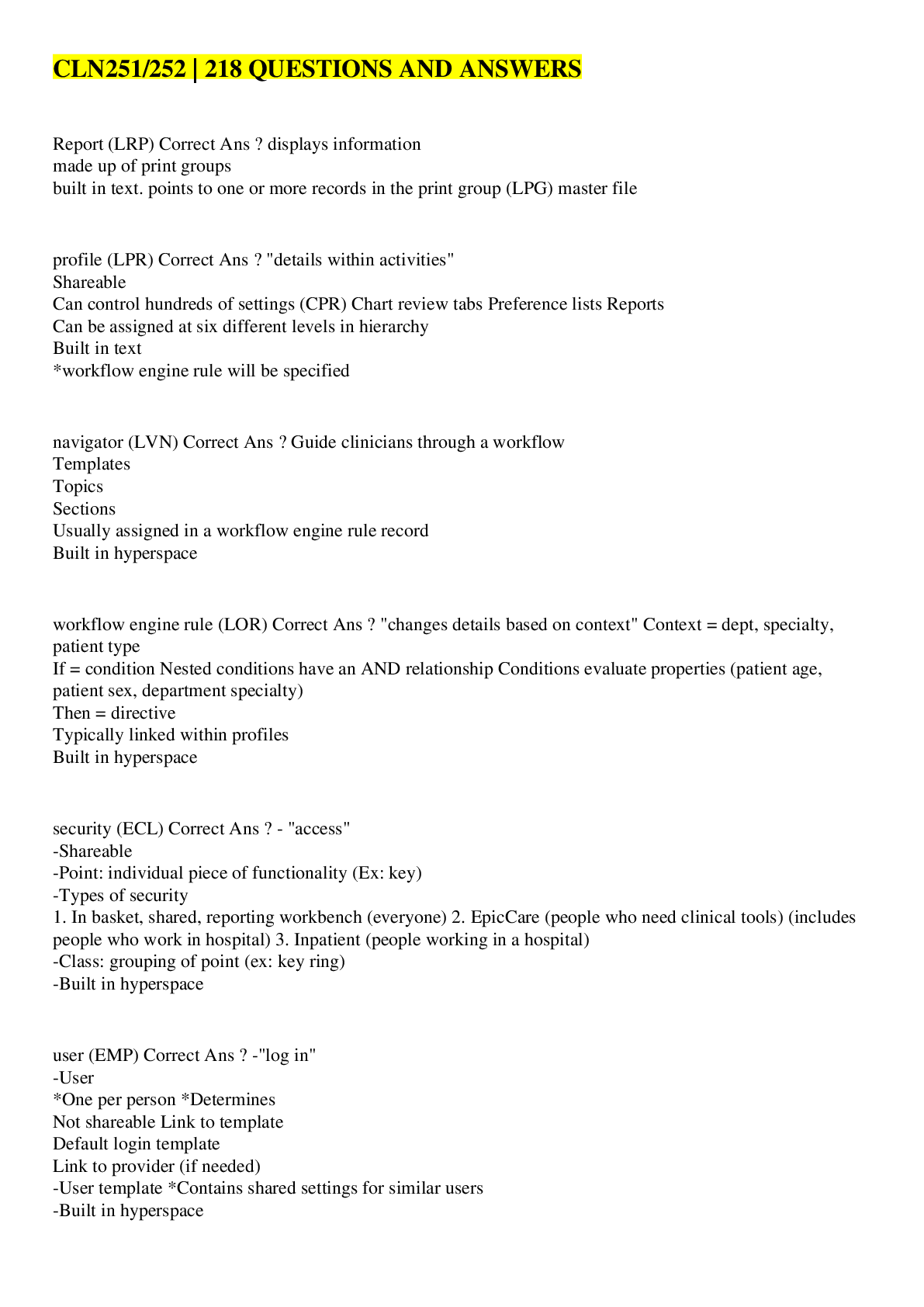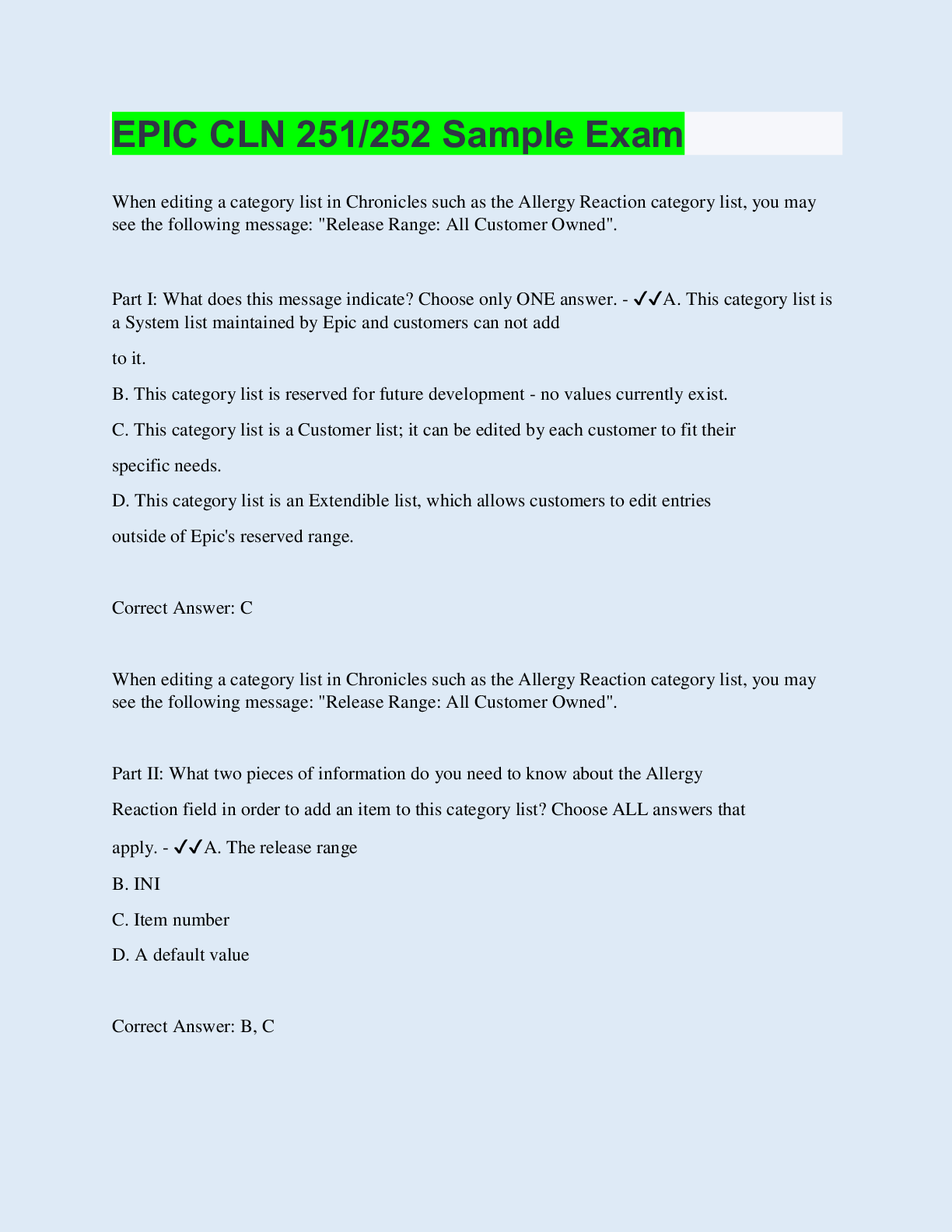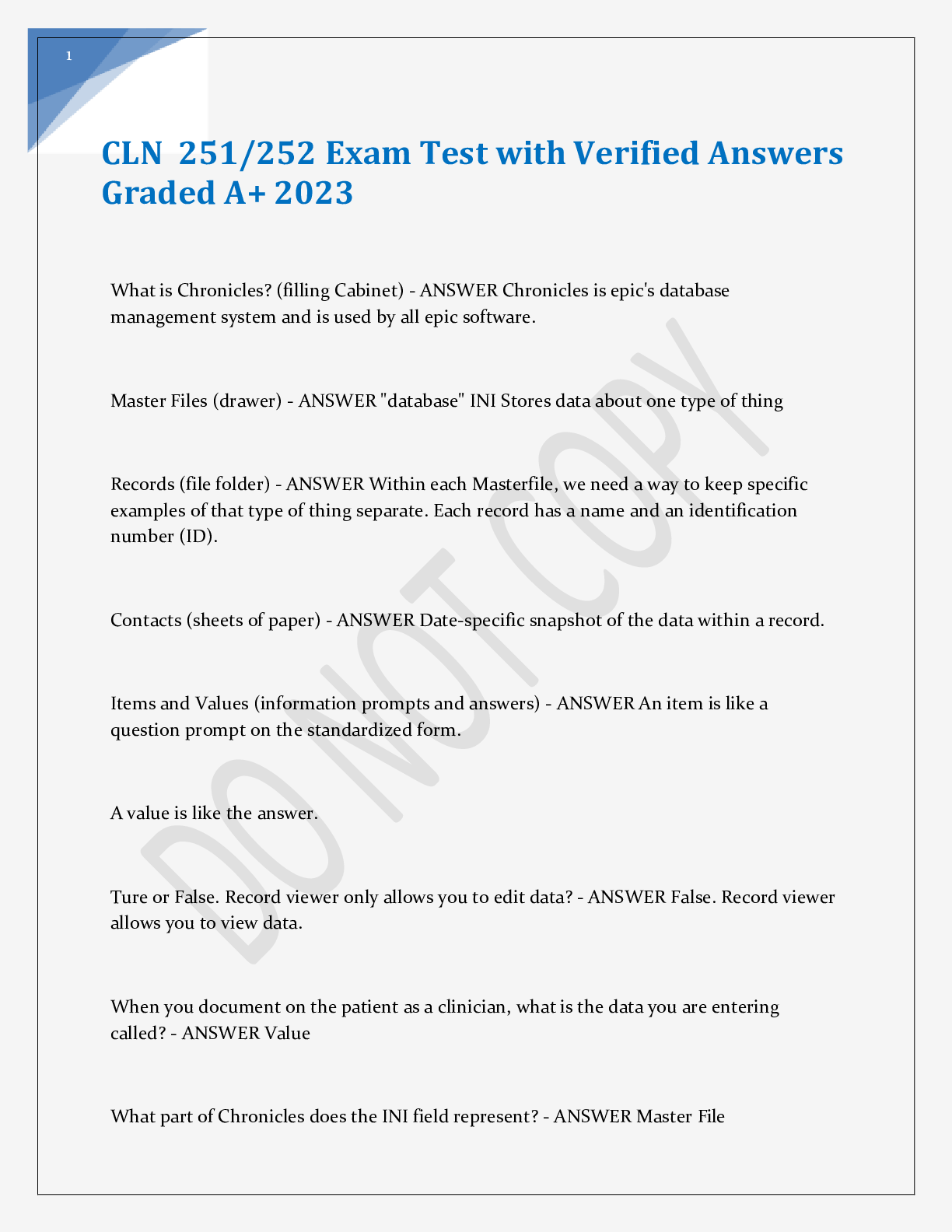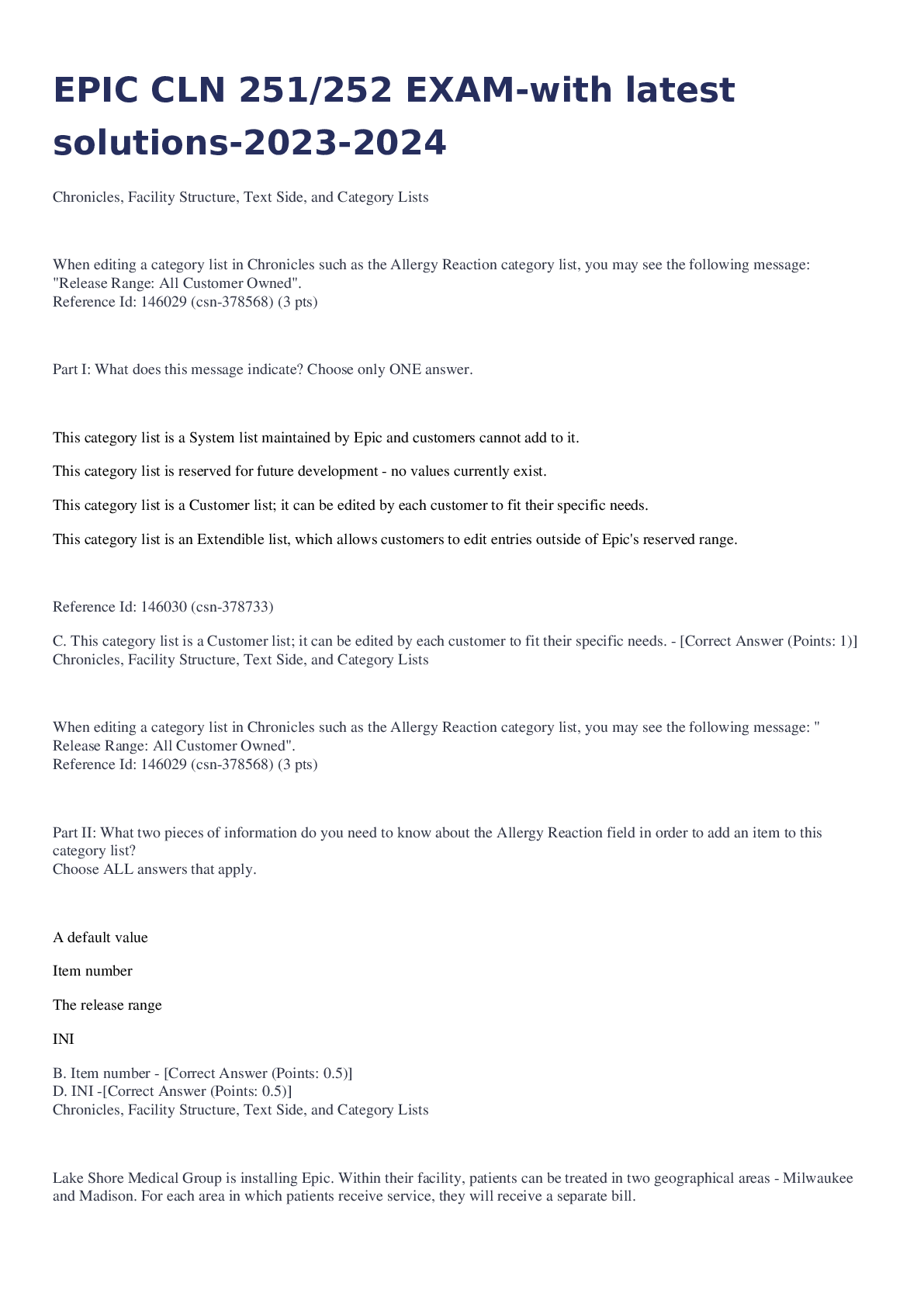Psychology > EXAM > Psychological Assessment PYC4807 Examination Memo for 2019 Questions and Answers Psychological Asses (All)
Psychological Assessment PYC4807 Examination Memo for 2019 Questions and Answers Psychological Assessment (University of South Africa) The most frequently asked questions Explained at Length.
Document Content and Description Below
Psychological Assessment PYC4807 Examination Memo for 2019 Questions and Answers Psychological Assessment (University of South Africa) 1 Exam questions have been typed out with the answ... ers below each question. This is a compiled Memo of past papers, the most frequently asked questions have been answered. This is also great for Assignment and to study straight from for exam time Question 1 Refine the two types of criterion-related validity, describe the process of determining these and give an example of each. Briefly explain what it means if a test is biased in terms of criterion related validity. Question 2 (a) Critically discuss the psychometric approach to intelligence and relate yourdiscussion to the South African context Discuss the purpose and rational of the Junior South African Individual scale (JSAIS) and indicate how the test relates to Spearman’s theory of intelligence. ////Question 1 A motor manufacturer developed the Technical Aptitude Test as part of their selection battery for potential trainees. Two forms of the test, namely Form A and Form B were developed to prevent cheating when testing large groups of candidates. The test-retest reliability coefficients for the two forms are 0 68 and 0 70. The alternate form reliability coefficient for the test is 0.45 (a) Define Reliability (b) Explain how test-retest reliability is determined (c) Explain how alternate form reliability is determined (d) Critically discuss the reliability of the Technical Aptitude Test commenting on the use of the test in this context Question 2 (a) Describe any four situational techniques that can be used for making employment decisions (b) Discuss the person-environment-fit approach to assessment in career counselling. Refer in your answer to each of the domains that should be assessed as part of this approach. ANSWER: (a) Describe any four situational techniques that can be used for making employment decisions (b) Discuss the person-environment-fit approach to assessment in career counselling. Refer in your answer to each of the domains that should be assessed as part of this approach. According to Parsons, the individual has to do 3 things when choosing a career: The 5 domains are: intelligence, aptitude, interest, values and personality. There are 3 general purposes of interest inventories in career counselling: Assessment of Values Assessment of Personality Question 1 Discuss norm-referenced tests and the different types of test norms. Explain how norm-referenced tests differ from criterion-referenced tests. ANSWER: PSD There are several test norms, and amongst the most common are: Developmental Scales, Percentiles, Standard Scores and Deviation IQ Scale. Developmental Scales • Mental Age Scales: • Grade Equivalents: 14 15 Percentiles The disadvantage Standard Scores Z-scores Advantages are: Disadvantages are: Linearly transformed standard scores Normalized Standard Scores The advantage The disadvantages Question 3 Organisations screen job applicants by testing them for particular skills and characteristics (a) Discuss the role that psychological assessment can play in the selection of a suitable candidate for a job. Refer to the different types of tests in your answer. (b) Describe and illustrate, with examples, any four situational techniques that can be used for making employment decisions. The most popular instruments in SA for assessing a person's different work-related aptitudes are: The most popular instruments in SA for assessing a person's work-related abilities are: The most popular instruments in SA for assessing a person's personality are: The most popular instruments in SA for assessing a person's work-related interests are: The most popular instruments in SA for assessing a person's work-relayed competencies are: (b). Describe and illustrate, with examples, any four situational techniques that can be used for making employment decisions. Question 1 When we call someone or something reliable, we mean that they are consistent and dependable. Reliability is also an important component of a good psychological test. A test would not be very valuable if it was inconsistent and produced different results every time. How do psychologists define reliability? Consider the 5 types of reliability and briefly explain what influence they have on psychological testing? Briefly explain what influence they have on psychological testing? Question 2 Critically discuss Sternberg’s Theory of Intelligence and Dynamic Assessment based on Vygotsky’s Theory with reference to the South African context. Your discussion should include a theoretical overview of each of these approaches. Question 3 Discuss the role of situational, personality and interest measures in the selection of a suitable candidate for a job. Give examples to illustrate the use of these measures. Question 1(REPEATED) A motor manufacturer developed the Technical Aptitude Test as part of their selection battery for potential trainees. Two forms of the test, namely Form A and Form B were developed to prevent cheating when testing large groups of candidates. The test-retest reliability coefficients for the two forms are 0 68 and 0 70. The alternate form reliability coefficient for the test is 0.45 (a). Define Reliability and Explain how test-retest reliability alternate form reliability are determined (b). Critically discuss the reliability of the Technical Aptitude Test commenting on the use of the test in this context Question 2 (a) Briefly define screening and diagnostic measures as categories of developmental assessment (b) Imagine that you have to assess the developmental status of a 5-year-old, Zulu speaking child. Discuss the required characteristics of a suitable test to measure the child’s general ability and suggest an existing measure that would be appropriate for your purpose. Your answer should include consideration of the difference between tests for infants and young children, the suitability of the test items and the instructions for this child, appropriateness in terms of the child’s socio-cultural background and the predictive validity of the result one obtains on developmental measures. Question 3 Suppose you work in the Human Resources Department of a tobacco company. You need to fill a vacancy for a health and safety officer. The job involves explaining complex legislation and procedures to people from all backgrounds. The candidate should be able to identify problematic issues and suggest solutions. (a) List 3 skills and/or personality traits that you regard as important for this role. Justify your answer. (b) Briefly describe the steps in the selection process that you would follow (c) Discuss the role that psychological assessment can play in the selection of a suitable candidate for this job. Refer to the different types of tests in your answer. EXTRAS FROM PAST PAPERS The experimental version of an assessment measure needs to be presented to gather quantitative information about the items in the measure as well as qualitative information on how test-takers respond to these items: a. List the steps followed in assembling and pre-testing the experimental version of a measure: b. Describe the purpose of the item analysis phase and critically discuss the item difficulty value and the item discrimination value indicating the application of each of these values. Question 4: a. Discuss the two categories of measure that any comprehensive plan of developmental assessment should incorporate. b) Critically discuss the shortcomings of developmental assessment measures within the South African context. Some of the shortcomings of developmental assessment in South Africa are: Question 5: Discuss the early childhood development assessment guidelines and principles. Principles of Assessment in Infancy and Early Childhood 1. Assessment must be based on an integrated developmental model: 2. Assessment involves multiple sources of information and multiple components: 3. An assessment should follow a certain sequence: 4. The child's relationship and interactions with his or her most trusted caregiver should form the cornerstone of an assessment: 5. An understanding of sequences and timetables in typical development is essential as a framework for the interpretation of developmental differences among infants and toddlers: 6. Assessment should emphasize attention to the child's level and pattern of organising experience and to functional capacities, which represent an integration of emotional and cognitive abilities: 7. The assessment process should identify the child's current competencies and strengths, as well as the competencies that will constitute developmental progression in a continuous growth model of development: 8. Assessment is a collaborative process: 9. The process of assessment should always be viewed as the first step in a potential intervention process: 10. Reassessment of a child's developmental status should occur in the context of day-to- day family or early intervention activities, or both: Critically discuss the role and relevance of Spearman’s and Vygotsky’s theories with reference to the South African context. (Refer to advantages and disadvantages of assessment measures based on each theory). [Show More]
Last updated: 1 year ago
Preview 1 out of 42 pages
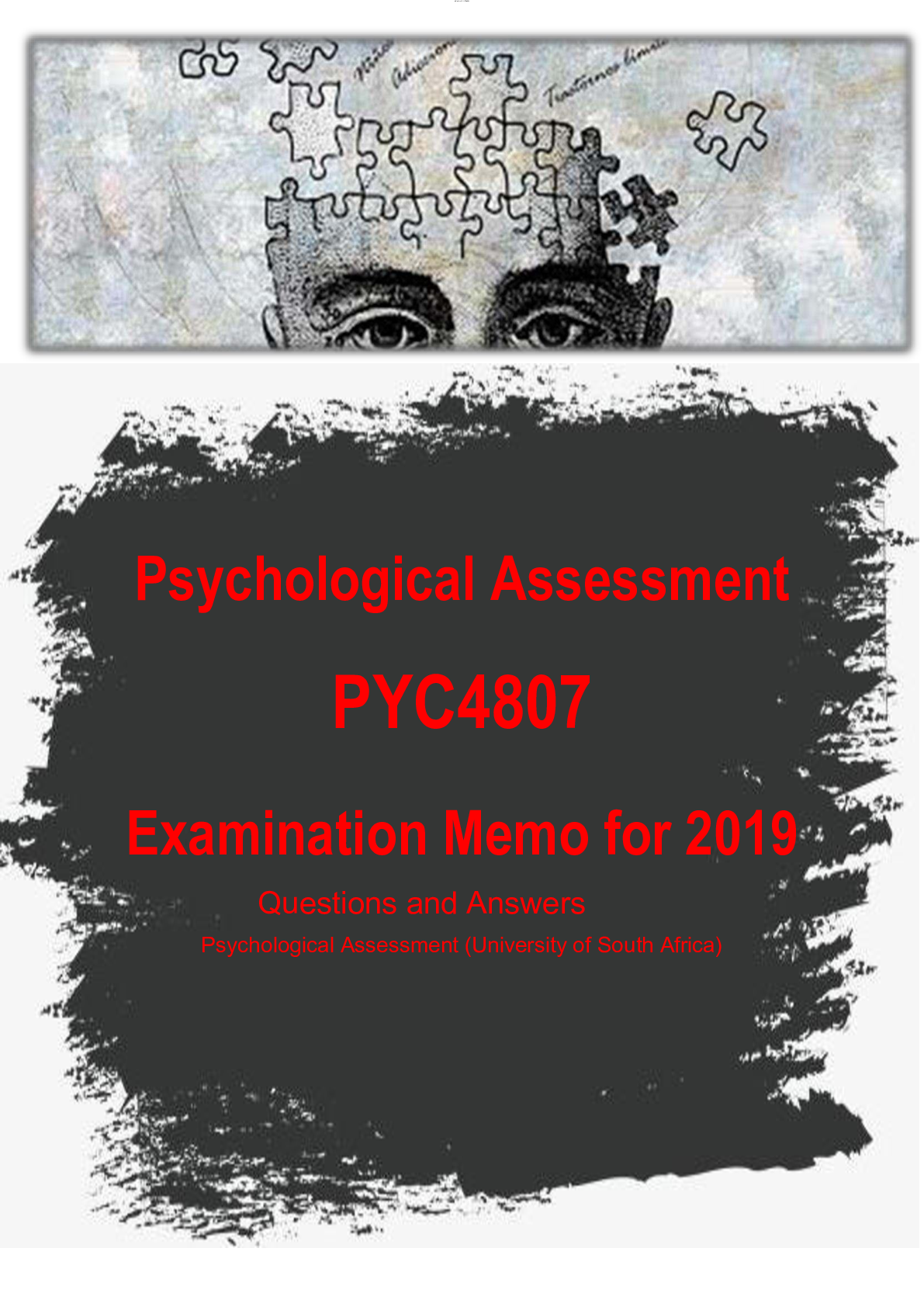
Reviews( 0 )
Document information
Connected school, study & course
About the document
Uploaded On
Jul 31, 2020
Number of pages
42
Written in
Additional information
This document has been written for:
Uploaded
Jul 31, 2020
Downloads
1
Views
349


